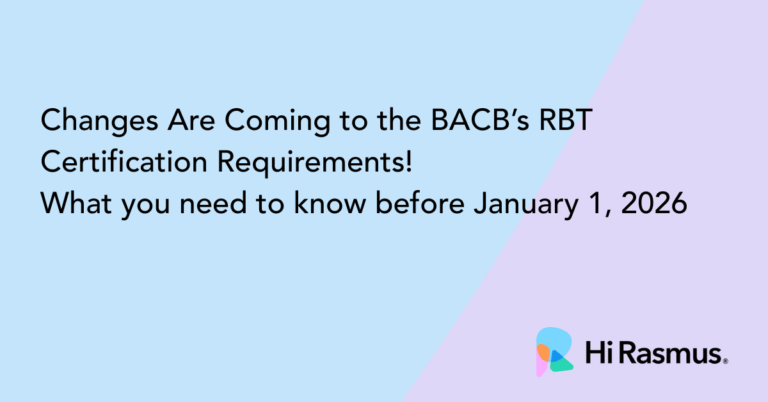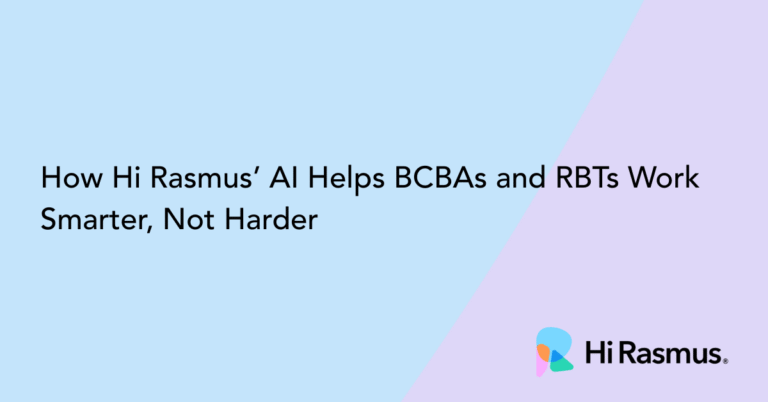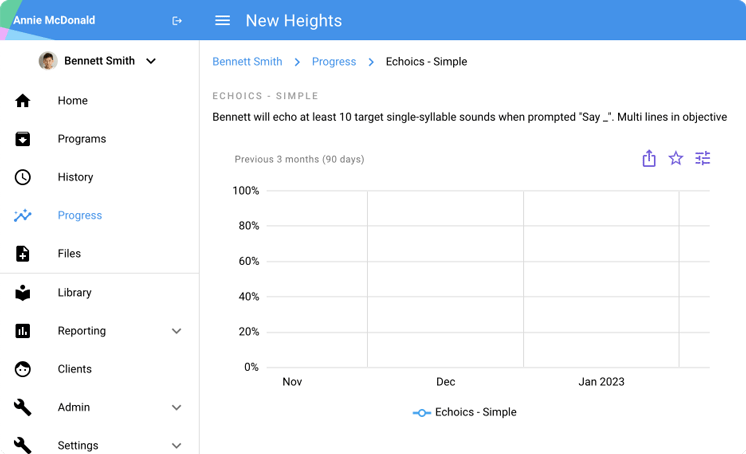The transition to the 6th Edition Test Content Outline (TCO) has brought significant changes to the BCBA and BCaBA exams. Understanding these updates is crucial for exam success and, more importantly, for developing the comprehensive knowledge needed to deliver high-quality behavioral therapy.
What Changed in the 6th Edition TCO
The 6th Edition went into effect January 1st, meaning all current exams are based on this updated framework, even if your coursework followed the 5th Edition. Here’s what you need to know about the structural changes:
Exam Structure Updates:
- The BCBA exam maintains 150 test questions but now includes 25 pilot questions (increased from previous editions)
- Nine sections are now called “domains.”
- Total questions: 175, including pilots
- The BCaBA exam follows a similar pilot question increases
Philosophy Shifts: The 6th Edition emphasizes understanding concepts behind procedures rather than just implementation. There’s increased focus on diversity, equity, and inclusion, with more compassionate language replacing terms like “deficits” and “problem behaviors.”
Domain-by-Domain Breakdown
Domain A: Foundational Knowledge
This domain remains virtually identical to the 5th Edition, with the same number of items but slightly more exam questions (8 vs. 6). No dramatic changes require additional focus here.
Domain B: Behavior Assessment and Analysis
Significant expansion: 24 items vs. 15 in the previous edition, though fewer exam questions despite more content.
Key new additions:
- Role of multiple control in verbal behavior (convergent/divergent control)
- Behavioral momentum and response persistence
- Matching law connected to response allocation
- Distinguishing imitation from observational learning
- Respondent extinction (now explicitly included)
- Emergent relations and generative performance
Domain C: Measurement
With 12 items (vs. 11 previously), this domain introduces important new concepts:
New terminology:
- Efficiency: Trials to criterion viewed through cost-benefit analysis
- Procedural integrity: Replaces “fidelity” or “treatment integrity”
- Discontinuous vs. continuous measurement: New language for time sampling concepts
- Dosage: Think of intervention hours as medical dosage
Domain D: Experimental Design
Expanded from 6 to 9 items with one additional test question. Critical new areas include:
- Identifying threats to internal validity (history, maturation, etc.)
- Critique and interpret data with focus on visual inspection skills
Important note: Experimental design fluency is crucial for understanding other sections—practice visualizing and explaining designs.
Domain E: Ethics and Professional Conduct
Major restructuring: This domain has transformed from 6 code-focused items to 12 comprehensive items covering applied ethics.
Key changes:
- Less black-and-white code questions, more thematic applications
- Core principles underlying the code (memorize and apply these)
- Identifying risks to self, others, and profession
- Interpersonal skills and collaboration
- Cultural humility in service delivery and professional relationships
Critical insight: Ethics should be integrated throughout the entire TCO, not studied in isolation.
Domain F: Assessment
Despite having fewer items (8 vs. 9), this domain has significantly more exam questions (23 vs. 18). New focus areas include:
- Integrating cultural variables into assessment processes
- Client-informed and culturally responsive approaches
Domain G: Behavior Change Procedures
This domain has fewer items (19 vs. 22) and significantly fewer exam questions. Important changes include:
New additions:
- Emotional and elicited effects
- Differential reinforcement with and without extinction
- Time-based reinforcement added to NCR terminology
Critical change: Extinction is no longer a standalone procedure—it must be combined with other interventions.
Domain H: Personnel Supervision and Management
Despite fewer items, the number of questions increased from 16 to 20, reflecting the field’s emphasis on the quality of supervision.
New focus areas:
- Planning for and mitigating the relapse of behavior
- Contextual fit (including cultural variables and environmental resources)
- Unwanted effects identification and mitigation
Domain I: Supervision
Fewer items but more questions, addressing supervision as a contributing factor to field-wide challenges.
Emphasis on:
- Promoting equity in supervision practices
- Cultural responsiveness in supervision
- Empirically validated management procedures
Effective Study Strategies
Beyond Mock Exams
While mock exams are valuable tools, relying exclusively on them creates several problems:
- They cover only a small portion of testable content
- Once reviewed, they’re no longer valid progress measures
- They provide misleading feedback on actual readiness
True readiness means you can:
- Discuss every TCO item as if it’s your natural language
- Explain concepts to non-professionals in understandable terms
- Demonstrate procedures practically
- Teach others to implement the procedures
Three-Step Study Process
Step 1: Environment Setup Create a dedicated study space with preferred materials, specific schedules, and minimal distractions.
Step 2: Active Processing
- Read each TCO item carefully
- Put information into your own words (no copying)
- Include examples, related terms, and connections
- Add visuals, acronyms, and memory aids
- Don’t write anything you don’t understand
Step 3: Gap Identification. Identify knowledge gaps for the targeted study and create your personalized reference guide.
Test-Taking Strategies
Question Analysis Approach
- Read the last sentence first for the call to action
- Use answer choices for context clues
- Eliminate obviously incorrect options
- Watch for words that change meaning (not, except, other than)
- Use ABC analysis for operant/respondent discrimination
Time Management
- Plan for 1 minute per question (185 minutes total)
- Reserve 55 minutes for breaks and review
- Decide your review strategy in advance
- Don’t aim for perfection—76% passes
Moving Forward with Confidence
The 6th Edition TCO reflects the field’s evolution toward more comprehensive, culturally responsive practice. These changes aren’t just exam updates—they represent the knowledge and skills needed to deliver exceptional behavioral therapy.
Success comes from thorough preparation and strategic studying, not from gaming the system. Focus on understanding principles, integrate ethics throughout your study, and remember that your journey may look different from others, but dedication and proper preparation will get you there.
Your work makes a difference in the lives of children and families. These exam changes support your development as a practitioner who can deliver high-quality behavioral therapy with cultural humility and clinical excellence.









